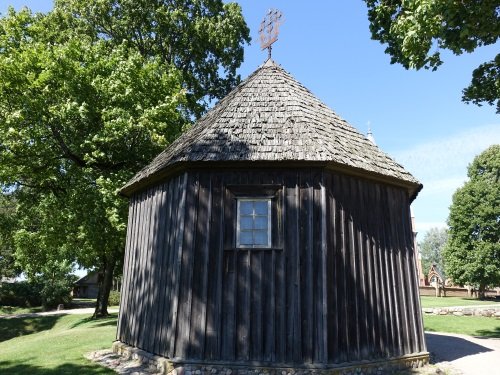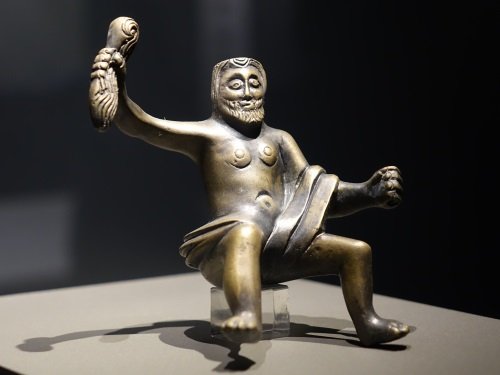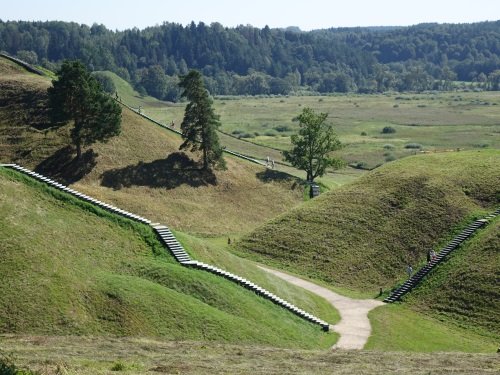Els Slots
WHS #612: Kernavė
The WH meeting in and around Vilnius provided me with a good opportunity to polish up some reviews of WHS in this corner of the world. Kernavė Archaeological Site had been reviewed for the last time 6 years ago, and – like the Curonian Spit – its distinguishing features always had been a bit of a mystery to me. It is also the least visited site in Lithuania among our subscribed travellers. However, it lies only 45 km from the capital and is open 5 days a week without any restrictions.

|
| Wooden chapel |
It is a largely unexcavated archaeological site, harbouring the remains of a settlement and five hill-forts dating from the 12th – 14th century. Kernave slowly had grown into a permanent town at this strategic location near the Neris River from the 1st century on. Its OUV lies mainly in the construction of these hill-forts, as well as the mixture of pre-Christian and Christian traditions (shown for example in the burial rites). The Lithuanians were very late to embrace Christianity: the official year is 1387, ending the existence of the last pagan nation in Europe.
Since 2012, the interpretation of this WHS has greatly improved due to the commissioning of a new on-site museum. The exhibition lies mostly underground, and lighting is kept to a bare minimum. This benefits the many audiovisual features. During summer, events of Experimental Archaeology are often held at the site and they’ve used recordings of these to explain the use of findings that are displayed in adjacent showcases. As many of the objects are quite primitive and repetitive (think endless numbers of earrings), the videos make the exhibition much more interesting. The only memorable object found & shown here is a small sculpture of a male figure, that is said to represent a pagan god (but could also well be a totally unrelated trade product obtained from Germany).

|
| Pagan symbol (possibly), shown at the museum |
After the museum, which lies at the entrance to the archaeological site and next to the modern church, we took in the views of the five hills near the river that comprise the main site. It’s difficult to see them all in once; and it's even more difficult to see fortresses in them: they look like tumuli (such as those in Gyeongju in South Korea) or a natural curiosity such as the Chocolate Hills in Bohol (Philippines). Fortunately we had just seen an animated video in the museum, showing the development of the hill-fortresses through the ages. The nobility and their guards lived on top of these hills, while the common people still stayed down near the river.
The lifestyle of these people is the subject of the Open Air Museum, also a fairly recent addition to the complex. It consists of a small village of wooden huts. There's not much 'story' told here, I have no idea which period they are trying to re-create or houses of which members of society. Also, no connection is made with the wooden chapel that seems to be the only original building still remaining on the grounds. One of our Swiss participants declared their interior "just like a contemporary Alpine mountain hut".

|
| The hills |
Long flights of stairs have been added to the hills, to allow climbing without disturbing the whole mound. Our guide for the day did not take us up there (which I really did not mind much as it was a hot day & I do not need to climb everything), but some of our WH group members wanted to. They succeeded taking in a couple while the others walked back slowly to the minibus. In all, we stayed at the site just under 2 hours - which proofs that with the additional 'attractions' there's more to see than in 2010 for example. There were some other visitors around, though it still it is not nearly as popular as Trakai Castle or Vilnius.
More on
Els SlotsComments
No comments yet.
